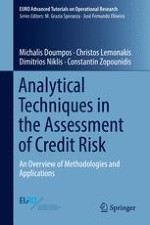2019 | OriginalPaper | Chapter
4. Applications to Corporate Default Prediction and Consumer Credit
Authors : Michalis Doumpos, Christos Lemonakis, Dimitrios Niklis, Constantin Zopounidis
Published in: Analytical Techniques in the Assessment of Credit Risk
Publisher: Springer International Publishing
Activate our intelligent search to find suitable subject content or patents.
Select sections of text to find matching patents with Artificial Intelligence. powered by
Select sections of text to find additional relevant content using AI-assisted search. powered by
